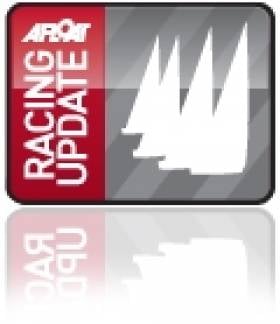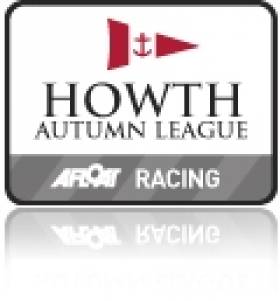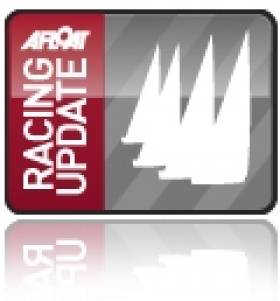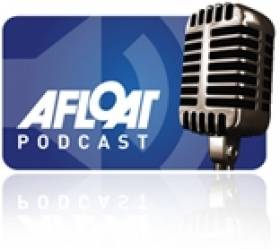Displaying items by tag: racing
Free Berthing for First 30 Entries in X Yachts Cup
Competitors will benefit from the following:
* Free Berthing for the first 30 confirmed entries
* Event T-Shirts for all competitors
* Breakfast for all competitors on race days
* Buffet and X-Yacht Bitter at the B & G Crew Party on Friday 6 May
* Hot Snacks and X-Yacht Bitter after racing each day
This year the event will be sponsored by North Sails, Harken, SailTek, CrewFuel, B & G, Pantaenius and Robinsons Brewery.
Carrickfergus Navigator Ian Moore Plots Aegir Caribbean Course
On loan from the Oracle America's Cup Team, Northern Ireland ace navigator Ian Moore is the navigator on board the Carbon built 80-footer Aegir for this week's RORC race in the Caribbbean.
Antigua Yacht Club is buzzing with excitement, with two days to go to the start of the 600-mile race around the central Caribbean. Yacht crews are busy at work making final preparations for the Royal Ocean Racing Club's (RORC) Caribbean 600. Falmouth Harbour is an impressive sight with the RORC fleet safely moored up next to the yacht club.
RORC Yacht of the Year ready for battle
Piet Vroon's Ker 46, Tonnerre de Breskens - the RORC 2010 Yacht of the Year - arrived just before dusk on Friday. The delivery crew, all six of whom will also be racing, endured a 1,000 mile beat to Antigua from Jamaica: "This will be our fourth and final event in the Caribbean." Explained Piet Vroon. "This is the first time that I have done this race and it is the main reason that we came to the Caribbean. All of my crew said that this is a race that they want to do and I am very much looking forward to it."
Tonnerre is one of three boats that competed in the Pineapple Cup, the opening rubber of the Atlantic Ocean Racing Series. George David's Rambler 100, Richard Oland's Vela Veloce and Hugo Steinback's Dubois 90, Genuine Risk also competed in the Pineapple Cup which Genuine Risk won on corrected time. Vela Veloce is a Southern Wind 52, which cleaned up in Key West race week in January.
Entries from Australia and 14 other nations
Yachts representing 15 Nations have come to Antigua to compete in the 600-mile spectacular, but none have come as far as Chris Bull's Cookson 50, Jazz. The canting-keel flyer arrived in Antigua on Friday, having made an epic journey bycontainer ship and sail from Australia, after a fantastic performance in the Rolex Sydney Hobart.
"It's been hard work getting the boat here from Australia, but we have done it, which just goes to show it is possible." Commented Boat Captain, Anthony Haines. Jazz's journey started on January 8th from Sydney, Australia to Savannah, Georgia. After which the delivery crew sailed 1400 miles to get Jazz to Antigua on time.
"Ever since the RORC conceived the idea of this race I have wanted to do it," said Chris Bull on he dock in Antigua. "I am also keen to do the Transatlantic Race and try and win the Atlantic Ocean Racing Series which I think is an excellent initiative which the RORC are involved with."
Rock Stars and Corinthian Sailors Rub Shoulders
From Lithuania, the Volvo 60, Ambersail debuts in the Caribbean and counts veteran round the world sailor Magnus Olsen in their crew. Ambersail is well travelled, having competed in last year's Sevenstar Round Britain and Ireland Race and the Rolex Middle Sea Race.
Ondeck's Farr 65, Spirit of Minerva counts British solo-sailor Hannah White amongst the crew: "Effectively there are 10 legs and well over 600 miles of racing in fantastic trade wind conditions which I am sure will be a strong test for navigators and crews in equal measure." Commented Hannah.
Class 40 World Champions on the line
Six Class 40s are expected, possibly more. Tony Lawson's Concise and Gonzalo Botin are past and current Class 40, world champions. Tony Lawson, owner of Concise expects a close duel with Tales: "There is no doubt that the Spanish team will be fast and possibly more suited to lighter conditions, but I am confident that the team on Concise will be fully focused and they are in control of a quick, well prepared boat."
Power and Elegance Combine
RORC Commodore, Andrew McIrvine has chartered the elegant and powerful 154 ft schooner, Windrose of Amsterdam. The crew has taken the magnificent yacht through its paces, spending two days practicing manoeuvres: "It is a very different kind of sailing to my First 40." Commented Andrew McIrvine. "The sheer size of the sails and equipment make for extremely physical work and manoeuvres are far more complex. Communication from front to back is only possible by hand signals. We had some good pressure during our practice session, which confirmed that Windrose is a powerful yacht, literally built for Caribbean sailing."
Navigator's make their Predictions
Brian Benjamin's Carbon Ocean 82, Aegir has been out testing sails and the crew, visiting the top part of the race course all night Friday. Night sailing makes up close to half the time during the race. Boat captain Shreda Duke confirmed that the exercise was very successful in bedding in the crew to their proposed watch-system. Aegir's navigator for the race is Ian Moore on loan from the Oracle America's Cup Team. Moore concurs with Hugh Agnew, ICAP Leopard's navigator, the prediction of stable trade wind sailing but added: "The first key area of the race may well come as night falls. Aegir should be approaching Nevis at dusk and the first really tricky part of the course. The islands of Nevis and St Kitts are high, which will throw out quite a wind shadow through this area; there will be a lot of gear changes in between the lulls and puffs of acceleration. The big decision from a navigator's point of view will be how far off the leeward side of these islands to go."
In Falmouth Harbour, the air temperature is a balmy 27º C and a fair breeze is flowing in from the northeast, meaning that the trade winds are functioning, but it's an ever-changing picture. Read John Burnie's expert summary on the RORC Caribbean 600 web site: http://caribbean600.rorc.org/
100 footers Go Head to Head
ICAP Leopard set the monohull course record in 2009, completing the course in 44 hr 5 min 14 sec and Mike Slade's team believe that they could beat the record, although they may not be the first home. George David's stunning Maxi, Rambler 100 is dockside in Falmouth and are favourites to take line honours. George David has secured the assistance of Ken Read to the afterguard and some of Ken's Puma Volvo Ocean Race crew. It is the first time that these two 100 foot canting keel maxi's have raced each other with ICAP Leopard having taken an interesting strategy and dropped their rating considerably, in a bid to gain handicap honours.
Local Knowledge from Caribbean Entries
Local interest comes from Bernie Evan-Wong who is competing in the race for the third time in his Mumm 36, High Tension. From Guadeloupe there is a Class 40, Territoires Attitudes, skippered by David Ducosson.
34 boats are expected on the start line on February 21st February. The RORC Caribbean 600 web site contains regular updates on the race, blogs from the boats and the progress of the boats, which have trackers, can be followed via the website: http://caribbean600.rorc.org/
Kellegher Leads Howth Yacht Club's Laser Standard Fleet
Team Racers Head for Schull
This season's Irish Team Racing Association's (ITRA) National Team Racing Championships will be sailed in Schull on 13th - 14th November. As excitement mounts for next year's ISAF Team Racing Worlds, entries for this year's event have hit a record 21. With 4 teams travelling from the UK, 6 Youth teams, all from Munster, the two Royal St George teams, quarter finalists in this years UK Open (better known as the Wilson Trophy), plus the top college teams the competition should be intense.
To ensure that the competition is fair and sailed to the rules the umpire team includes 4 International Umpires, and includes umpires from the USA, the UK and even Dublin. Race organisation by the Fastnet Marine and Outdoor Education Centre will provide a full dress rehearsal for next year's event. A presentation of plans for the Worlds will be held on Saturday evening, but for competitors the major attraction will be the opportunity to sail the prototype of the specially designed boat that will be used next year.
Following this event the top Irish team racers will be invited to put themselves forward for selection for the teams to represent Ireland in both the Open and under 19 categories at the Worlds. ITRA will invite selected teams to a trial event to be held early in 2011.
For further information please contact: Gordon DAVIES, Secretary, Irish Team Racing Association. Ph; 086 150 1220
Liebherr Cruiser Nationals - from the dock
In this week's Afloat podcast, Markham Nolan hits the pontoons of the Royal St George to get a glimmer of how the first day of the ICRAs kicked off.
Cork Week, How Rocketships work
Jargon – How the Cork Week Rocketships Work
Sailing fast is all about converting the wind’s energy into boat speed and these big ocean racers generate more horsepower and speed for their size than any single-hull craft that has ever sailed the seven seas.
When the wind blows over 20 knots they leave pursuing powerboats wallowing in their wake. Photographers have to resort to helicopters.
The secret to the success of these high-tech speedsters is their weight-saving, super-strong, carbon fibre construction and their radical underwater design.
Gone are the keel and rudder combinations of conventional sailboats where the shape and weight of the keel counteracts the heeling effect of the wind and helps prevent the boat making leeway (slipping sideways).
In place of the keel is a slender strut with a nine-ton ballast bulb at its tip. Swung out (canted) sideways under the boat by a hydraulic ram, the bulb provides extra stability, standing the boat up straighter and making the sails more efficient.
The twin rudders, one ahead of the strut and one behind it, perform a double duty. They provide the foil shape and area to minimise leeway while also improving maneuverability.
Tacking calls for no more than the touch of a button to swing the keel into a new direction.
Disney and Plattner, the CEO of Germany’s SAP software empire, were fellow competitors in a previous class of lightweight 75-foot ocean racers, worked together to create the new class.
"To have a bunch of boats where we can go out and actually have boat races instead of designer races seems to me to be really good idea,‰ Disney said. „That's what I hope for with this project – that it will attract people who want to go racing on the same terms. Not that we all don't like to go a little bit faster than the next guy, but it's a lot more fun when it’s a boat race."
Monkstown Bay Sailing Club

Goldie Cronin 'Alta to Starboard To Finish' Trophy Event. Photo: Alan Fleury
Monkstown Bay Sailing Club
Monkstown Bay Sailing Club is located in the picturesque village of Monkstown, which overlooks Monkstown Bay in Cork Harbour.
Dingy league races are generally held within the Bay area, while Cruiser league races extend their reach up river to Passage and out the harbour to Cobh, Whitegate and beyond. Weekend events make full use of the Harbour waters, including races to Blackrock, East Ferry and Ballynacorra, and trips to Whitebay and Crosshaven.
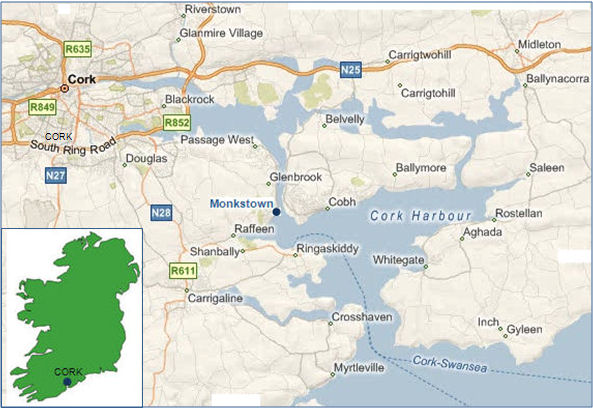
Dinghy sailing club with racing every Tuesday and Friday. All classes welcome. Annual junior training programme run during July. Clubhouse and usual facilities. Membership open. Dinghy courses offered up to Improving Skill, Advanced Boat Handling, and Racing 1.
MBSC Officers and Committee 2009
Commodore – Finian O' Driscoll – Email: [email protected]
Vice-Commodore – John O'Driscoll – Email: [email protected]
Hon. Secretary – Andrew Moynihan – Email: [email protected]
Rear Commodore – Ewen Barry – Email: [email protected]
Hon. Treasurer – John Crotty – Email: [email protected]
Sailing Secretary – Ronan Kenneally – Email: [email protected]
Junior Training Organiser – Ann O'Brien – Email: [email protected]
Monkstown Bay Sailing Club, 3 de Vesci Place, Monkstown, Co. Cork. Tel: 021 485 9935 (Club House) or 087 825 2855 (Alan Fleury), or email: [email protected]
Cork Week 2008 Preview
Cork Week 2008 Preview
380 boats and a fleet packed with quality
(reprinted from Afloat June/July 2008)
Markham Nolan previews ACCBank Cork Week that has announced a new Cup for the amateur cruiser-racer
It’s now 30 years since the concept of Cork Week was born. In 1978 Royal Cork started the tradition of a biennial regatta with just 50 enthusiastic boats and a smattering of volunteers. Little did they know what they had started. The regatta gained momentum, and ten years later the club had a major event with a cult sailing following on its hands. Cork Week had arrived.
At that stage, Cork Week was a welcome antidote to the hot-shot racing that pitted the disgruntled amateur against the pro. No pros were allowed at Cork Week, a Corinthian ethic reiterated this year with a new trophy for the amateur cruiser-racer, the Corinthian Cup supplied by the Sisk Group. Boats in IRC Class Zero, in which professional sailors are allowed, are eligible if they have a maximum of one Group 3 classified sailor on board.
However, the pros are out there, in the one-design classes and in the big boats, and part of the experience of something like Cork Week is racing at an event which can still attract top names in yacht racing. Racing against the best is an education, and there’s always the chance that you’ll rub shoulders at the bar, and perhaps learn a trick or two from a friendly pro over a pint.
Since those early days, then, Cork Week has become something of a sailing must-see. It’s a rite of passage, providing milestones every other year by which Irish sailing is measured. Do you remember your first Cork Week? Of course you do. You still tell the stories. The memory will be blurry, sunburnt and caked in salt, but you’ll remember it – for many reasons.
There’s the fact that Crosshaven, geographically, was never meant by God to see this much action. The narrow tidal estuary has overcome its limitations through innovation, expansion and pure can-do moxy to accommodate all-comers. As craft of every conceivable shape and size funnel into the harbour at the end of the racing day, you could practically walk from shore to shore without getting your feet wet, using the moving boats as stepping stones.
There’s the fact that, for plenty of us, this is, undoubtedly, the biggest and best event available.
Until recently, nothing came close to Cork Week for sheer volume, with several acres of canvas hoisted by thousands of competitors every day, and gallons of liquid refreshment sluiced through bodies every evening. It has been Ireland’s yacht racing behemoth for decades, and the numbers, when all is said and done, are mind-boggling. There’s the craic, the unquantifiable charisma that is a factor of place, people and shared experience.
And then there’s the racing. Outside the heads the fleets go their separate ways in the morning, returning to the marina, bar and bandstand together at the end of the day. The middle part of the day is filled with the reason most go to Cork – a mix of courses, conditions, classes and competition that is unsurpassed.
The secret, as always, is in the successful mix of onshore and offshore pleasures. The tent city provides as many memories as do the racecourses, and with 10,000 visitors through the gates in any given year, its status as one of Ireland’s biggest sporting events is assured. Landlubber delights this year include several top music acts, with Paddy Casey and Aslan just two of the big names gracing the tent city in ’08.
But what of the racing at ACC Bank Cork Week, the 2008 edition, which is likely to be as memorable as any other? Entries have already reached a respectable 380, down from the heady, chaotic days of 600 boats and more, but it’s a fleet packed with quality. Again, it’ll be a spectacle like no other at the top end of the ratings, where the big money and the pros live.
For those who enjoy the skyscraper effect of superyachts, as you crane your neck upwards to take in their monstrous rigs, there are a handful of over-60s, including the awesome STP 65 Moneypenny, owned by San Franciscan Jim Schwarz, and the enormous 90-foot Reichel Pugh, Rambler, one of two maxis which featured in last year’s Fastnet Race.
However, it’s the slightly smaller TP52s that have the most potential for high-speed, close quarters cut-and-thrust racing. The six one-design carbon sleds (or as close as dammit to one-design), include Colm Barrington’s Flash Glove. The fleet will line out off Roches Point and those following form will be offering slim odds on Benny Kelly’s Panthera, which has stolen a clutch of victories around England’s south coast already this year.
Ten Farr 45s form another high-performance one-design category within IRC class Zero, as well as, further down the ratings, ten X332s, a dozen Beneteau 31.7s and more than two dozen J109s, which will share guns for some toe-to-toe action in their Irish Championships.
And among the cruiser-racers, the beating heart of the event, you’ll find a slew of top club racers facing off against crews returned from the Commodore’s Cup.
The newly-swelled ranks of the SB3 class are expected to number into the forties, with entries coming from as far afield as Australia.
For the slightly more sedate, yet no less competitive, forty-something entries flesh out the increasingly popular white sails gentleman’s class.
All that remains is to get thee to the Rebel County for another edition of Ireland’s premier regatta. It’s all there once again – everything that makes the week as special as it is. The line-up is solid. The stage is set. Cork it.
The Admiral's View
Describing himself as a ‘reluctant admiral’ when it comes to telling his story, Mike MacCarthy started sailing in dinghies at the Royal Cork Yacht Club at about nine or ten years of age. He’s now been involved for 30-odd years having worked up to admiral, a position he will fill for the next 18 months having started in the position in January 2008.
Enjoying his tenure, looking forward to Cork Week and commenting on what it means to be admiral, MacCarthy maintains that, “the club here is quite large and there are a number of different sections: racing, dinghies, cruising, and motor-boating, and each group has their own social element. I have to try and represent every one of these and not just the club itself, which makes the job time-consuming, yet very interesting”.
Putting a slight sail to his own story, MacCarthy acknowledges “I’m from the racing fraternity and the name of my boat is Checkmate – a family association – which is a racing cruiser, and I enjoy racing in West Cork and go to Dublin on a regular basis, and I’ve been to Dún Laoghaire Week several times”.
If the Royal Cork Yacht Club had the ear of Government, MacCarthy would like to see “a better system to allow the club develop its facilities, both land- and water-based. For instance, if I had a €5 million donation tomorrow, I wouldn’t be able to build a marina. Or a slipway. The planning regulations and the red-tape between The Department of Communications, Energy and Natural Resources, valuation departments and county councils (even though Cork County Council has been very good to us and has been very understanding) is a nightmare. We have a wish list of a number of projects we’d like to do including extending our marina, putting in a crane, and developing an extra slipway. However, with all the different departments to negotiate with, it’s incredibly difficult to improve the quality of the club.”
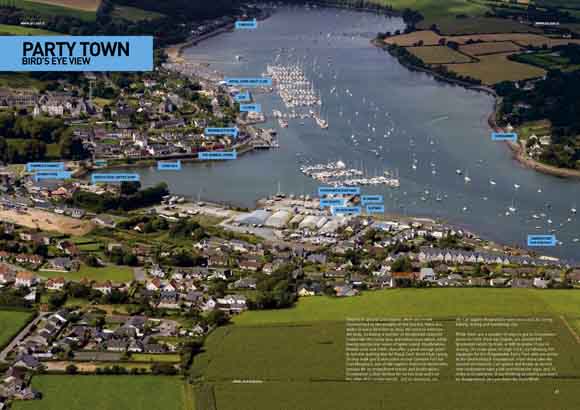
Party Town
Once in or around Crosshaven, when you’re not mesmerised by the delights in the marina, there are walks in every direction to clear the mind or exercise the body, including a number of designated coloured routes like the rising blue and yellow lines which, while having spectacular views of Spike Island, Haulbowline, Rushbrooke and Cobh, also offer a good vantage point to see the starting line for Royal Cork Yacht Club racing. On this walk you’ll also come across Camden Fort (or Fort Meagher), one of the region’s historical landmarks, famous for its magnificent tunnel and fortifications. Crosshaven is also famous for its two holy wells on the edge of Cruachan woods, and its limekilns, on the Carriagline Road which were once used for firing, baking, drying and hardening clay.
While there are a number of ways to get to Crosshaven, prices to Cork, from say Dublin, are around €90 (premium) return by train, or €85 by plane. If you’re driving, the route goes through Cork city following the signposts for the Ringaskiddy Ferry Port until you arrive at the Shannonpark roundabout. From there take the second exit towards Carrigaline and finally at second next roundabout take a left and follow the signs and 13 miles to Crosshaven. If you thinking of visiting you won’t be disappointed. See you there for Cork Week.
Mayo Sailing Club

Established in 1976 to promote sailing in Clew Bay and the West of Ireland, Mayo Sailing Club (MSC) has earned a solid reputation in both cruising and racing. There are currently more than 250 members taking part in various on- the-water activities during the season. Activities include a youth sail training programme, dinghy racing, cruising boat racing, and cruising. On the competitive racing front, members have taken part and performed at the top of class in open events along the west coast and beyond, including the Round Ireland Race and the World Student Yachting Championships. On the cruising front, many members actively cruise the challenging waters of the West coast, while more adventurous souls venture to Europe, across the Atlantic, around the world, and even to the remote regions of the Arctic and Antarctic. Training on these local waters of the wild Atlantic prepares intrepid MSC sailors to sail anywhere.
With a beautiful clubhouse that has stunning views on the shores of Westport Bay, MSC offers sheltered moorings, a pontoon laid on with water and electricity, a slipway and hardstand, boat shed for storing outboards and other equipment, a secure area for stowing dinghies, bar and social room open on race days, comfortable changing rooms with toilets and showers, as well as three rescue boats and one race committee boat. Located just 10 minutes from Westport town.
Since its establishment Mayo Sailing Club has earned a good reputation in both cruising and racing.
There are currently 250+ members, with 33 cruiser/racers, five adult dinghies and 25 junior dinghies all taking part in activities during the season.
From regular summer cruising along the west coast and its islands, to wilderness expeditions to the Antarctic and Artic, members have demonstrated their enthusiasm for sailing. On the racing front members have been to the fore in open events along the west coast arising from the very competitive club racing which has evolved at home at MSC
Activities
MSC moved to Rosmoney in 1983, and from 2008 can offer its members during the season (April to September, except for adult dinghies which starts in January):
– A beautiful new Clubhouse
– Junior sail training and racing each summer
– Class 1, Class 2 and Class 3 cruiser racing Thursday evenings and Sunday afternoons (Five Race Series)
– White Sail Fun Races
– Pursuit Races
– Introduction to sailing courses Tuesdays in May
–Flotilla cruise to Boffin August Bank Holiday, and various cruises and rallies during season,
– Annual club regatta August with Commodores Mid-Summer Ball [Black Tie]
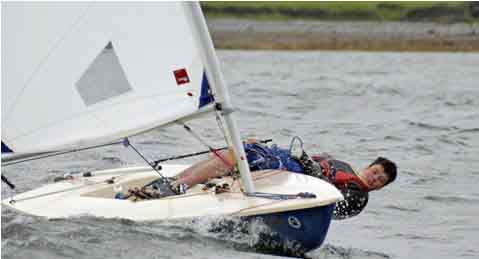
Club facilities at Rosmoney
– Comfortable changing rooms, toilets and showers
– Bar and social room
– Boat shed for storing outboards, etc. (strictly controlled)
– Club slipway and hard stand berthage
– Access to moorings
– Three rescue boats and one race committee boat
– A fleet of junior sailing dinghies for use on the very popular junior sailing courses include four Mirror sailing dinghies and two Optimist sailing dinghies
Contacts
Damien Cashin, Commodore – 087 245 0123 – [email protected]
Paul Murphy, Vice Commodore – 086 839 0581 – [email protected]
Donagh Waldron, Hon. Secretary – 087 2474811 – [email protected]
Mary Walsh, Hon. Treasurer – 086 837 1669 – [email protected]
Cathal Geoghan, Hon. Sailing Sec – 087 797 5627 – [email protected]
Peter Quigley, Junior Organiser – 087 638 9010 – [email protected]
Gerry Daly, Rear Commodore – 085 174 1942 – [email protected]
Paddy Alyward – 087 236 4833
David Baird – 087 236 2124
Boyd Gale – 086 226 3319
Hugh O'Donnell – 086 069 6159
Una Quigley – 087 245 2921
Declan Ruddy – 087 272 6616
James Fitzsimons – 087 230 4331
John O’Brien – 087 241 5664
(The above details and images courtesy of Mayo Sailing Club)
Mayo Sailing Club, Rosmoney, Co. Mayo
Have we got your club details? Click here to get involved
Fireball
The Fireball is a high performance two-person sailing dinghy offering exciting sailing, intense competition and a great social life off the water. For all the latest Fireball news click here. The thrills of trapeze and spinnakers are hard to match in any type of sailboat or board and neither age nor gender determines your ability to be competitive.
Fireballers sail all year round – during the Winter at the DMYC Frostbites in Dun Laoghaire and the during Summer at many events around the country and the DBSC Tuesdays and Saturdays again in Dun Laoghaire. In addition there are active fleets in Clontarf, Killaloe and Dunmore East. If you would like to sail then get in touch with one of the following people who will help you find a spot!
Siobhan Hayes, Dun Laoghaire – tel: 087 205 8879
Hugh Johnson, Clontarf – tel: 087 659 3533
Cormac Bradley, General – tel: 086 814 3618
Owen Laverty, Dun Laoghaire – tel: 087 6107857
Richard Fox, Killaloe – tel: 087 248 4977
Brian O'Neill, Ballyhenry – tel: +44 7849 465124
Irish Fireball Association, c/o Margaret Casey, Secretary, 48 Riverside Drive, Churchtown, Dublin 14. Email: [email protected]
Afloat's Graham Smith wrote, in the One Design Class Review for the February/March 2009 issue:
"The Fireball has been written off so many times yet consistently defies all obituaries. In fact, it has grown slightly over the years to provide a national fleet in the region of 70 boats at 15 venues which tends to substantiate its claim of being one of the leading dinghy classes in the country.
Twenty-eight boats at the Nationals in Westport was a little down on the previous year but entries in the mid-20s for the other regional events would be considered more than satisfactory by a lot of other classes in this day and age.
Noel Butler and Seamus Moore of DMYC retained their national title in Mayo, won the Ulsters in Carlingford and also won the Traveller’s Trophy for consistency of results. Fifteenth overall in the 68-boat World Championships in Thailand was a highly creditable finish for the Dun Laoghaire duo.
Another Dun Laoghaire crew, Kenneth Rumball and Dave Moran, had a seventh overall at the Europeans in Belgium while, at home, Andy Pearce and Francis Rowan of the National YC won the Leinsters in Mullingar and the Skerries helm Simon McGrotty notched wins in the Munsters and Open Championships with two different crew. National Champions: Noel Butler and Seamus Moore, DMYC."
There is a space for Irish boating clubs and racing classes to use as their own bulletin board and forum for announcements and discussion. If you want to see a dedicated forum slot for your club or class, click here



























